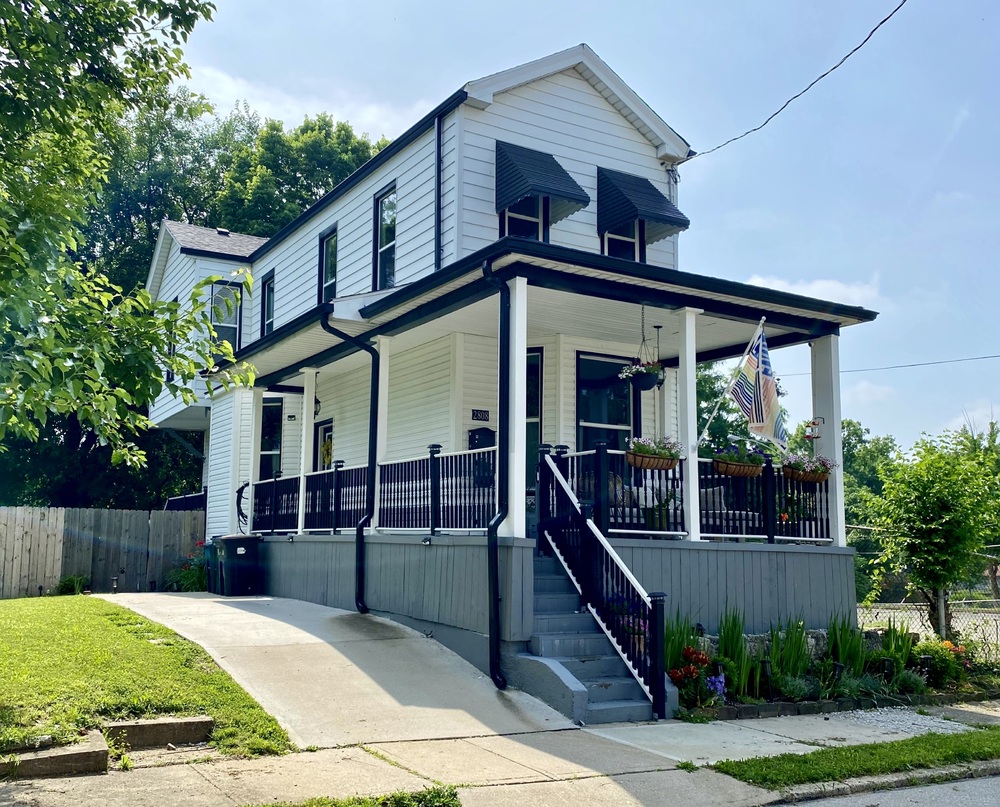Home of James Hathaway Robinson, Sr.
Nationally known sociologist

At 2808 Preston Street in Walnut Hills, there is a two-story wood frame house, built in the 1880’s. In the 1910’s, this was a boarding house, and for several years it was the home of James Hathaway Robinson, Sr., a leading sociologist who eventually gained a national reputation.
James Hathaway Robinson was born in Sharpsburg, Kentucky in 1887. He attended Fisk University, one of the premier Historically Black Colleges, founded in Nashville Tennessee in 1866. Robinson graduated from Fisk in 1911. He then enrolled at Yale University. He spent a year completing a second bachelor’s degree in 1912 and began to study sociology in graduate school. He got his master’s from Yale in 1914 and embarked on a Ph. D. He spent the 1914-15 academic year at Columbia.
In 1915, Robinson moved to Cincinnati to teach at Frederick Douglass School and to pursue further research. (It gives us some sense of the high reputation of Frederick Douglass School at the time that Robinson made this choice.)
In 1916, he married Neola Woodson, a fellow teacher at Douglass School. After some time living on Preston Avenue, the Robinsons bought (or had built) a duplex house, still standing at 3275 Gaff Avenue. They later moved to another house, also gone, at 853 Beecher Street, a fashionable middle-class Black address next door to Douglass School principal F. M. Russell.
James H. Robinson became a sociologist in the tradition of W. E. B. Dubois, who had done pioneering sociological work in Philadelphia and Atlanta. In Cincinnati, Robinson carried out a real-time study of the Great Migration of African Americans in the South to the cities of the North. Robinson worked with the leaders of the city’s African American community to develop his plans. He also enlisted “every conductor on the four southern railroads converging here” to keep a record of “the migrants from the South destined for this city.” Volunteers reinforced paid assistants in a “house-to-house” investigation like DuBois’s research in Philadelphia twenty years earlier. Moreover, Robinson reported, “three hundred and fifty-seven teachers in the public schools made twenty thousand telephone interviews.” This was what we might call big data in the 1910’s, all tabulated by hand.
Robinson presented his work at the National Conference of Social Work in July 1919. His report, “Revelations of the Cincinnati Negro Survey,” was worthy of the DuBois school. Data driven and thorough, it offered a comprehensive analysis of its subject.
Like DuBois, James H. Robinson took a detour from the academic world to do policy development and advocacy. He became the Executive Secretary of the Negro Civic Welfare Committee of Cincinnati’s Council of Social Agencies. He wanted to see better coordination of local Black institutions. He especially hoped to enlist the organized support of the Churches in the community – not, he emphasized, seeking religious or theological solidarity, but coordinating the provision of Social Services through 53 Church Auxiliaries. He sought the support and development of a Black-run YMCA and YWCA, of the Colored Orphan Asylum, The Crawford Old Men’s Home and a home for Aged Colored Women. His Negro Civic Welfare Association, in conjunction with other organizations, established the Shoemaker Clinic to provide free medical services in the West End to poor African Americans.
In the summer of 1928, Neola Robinson died after a brief illness. James Robinson returned to Fisk University, with his young children, as a professor and as the supervisor of Negro Welfare in Tennessee. There he conducted another major sociological study for which he earned his Ph. D. in 1934; Yale University Press published it as A Social History of the Negro in Memphis and in Shelby County. Finally credentialed, Dr. Robinson returned to Ohio in 1933 as a professor of sociology and social administration at Wilberforce University, where he served as the Dean of the College of Liberal Arts from 1939-1949. He died in Atlanta in 1963.
For more information about James Hathaway Robinson, his work, and his influences, see the article at the Walnut Hills Historical Society.
Images

